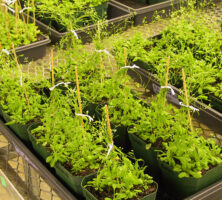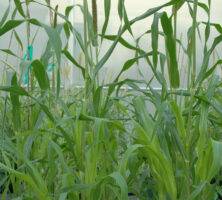The genetic engineering of plants and animals influences the daily lives of Georgians, many of whom consume genetically engineered (or transgenic) crops, wear clothes made from cotton engineered to resist pests, and clean up toxic sites with plants engineered to extract, vaporize, or mineralize toxins. Some Georgians also use transgenic tobacco that has been genetically engineered to contain little or no nicotine.
The genetic modification of crops can improve agricultural efficiency by increasing the nutrient content of plants, expanding the geographic range of crops, and lessening the negative impact of agriculture on natural resources. Genetic engineering has also led to advances in the field of medicine through the engineering of model species that mimic disease conditions. Scientists study these models in an effort to discover better therapies and cures for a variety of diseases. Research in genetic engineering is conducted at universities around the state, including the University of Georgia Tifton campus (formerly Coastal Plain Experiment Station), Emory University in Atlanta, and the University of Georgia in Athens.
Process of Genetic Modification
Deoxyribonucleic acid, commonly known as DNA, is the hereditary material in a cell’s nucleus that guides an organism to develop in a certain way from an embryo into an adult. DNA affects almost every one of the organism’s characteristics by carrying the information, in the form of genes, required for each cell to make functional proteins. In addition to their fundamental role in an organism’s growth and development, these proteins impart individual traits. In plants, these traits include the flavor and color of fruit, the ability to resist cold and heat shock, and the presence of specific enzymes that can detoxify some chemicals.
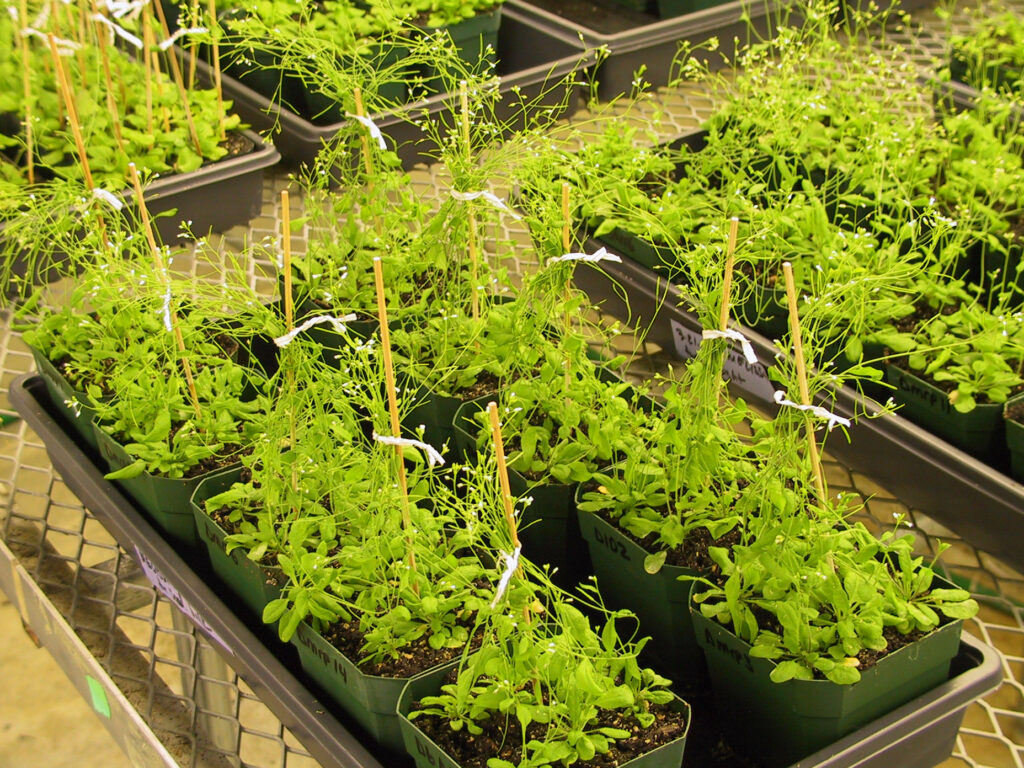
Photograph by Sarah E. McKee, New Georgia Encyclopedia
Genetic engineers seek to impart desired traits from one type of organism to another by transferring the genetic material (or genes) needed to create certain proteins. For example, much of the corn and cotton grown in Georgia has been engineered to make a protein that is toxic to harmful insects. This protein is taken from the bacterium Bacillus thuringiensis (Bt) and inserted into a crop plant’s genome (or genetic makeup). Because Bt plants resist pests better than wild-type (normal) plants, they require smaller amounts of pesticides than do unmodified plants.
To transform an organism’s genome, researchers must identify DNA that codes for a specific trait, such as insect or drought resistance, then isolate it from the organism’s other genetic material. Using restriction enzymes, which are molecules that serve as “DNA scissors,” researchers isolate the desired gene so that it can be cloned, which is the process of making multiple copies of the gene. The gene copies are then transferred into the genetic material of the target organism.
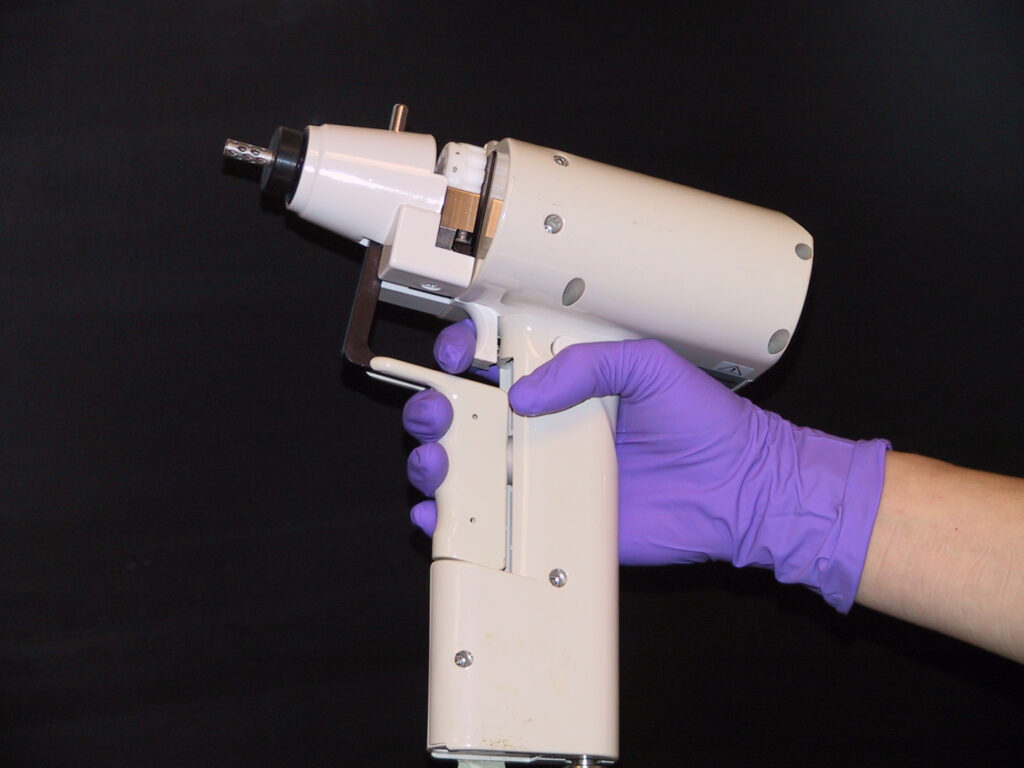
Photograph by Sarah E. McKee, New Georgia Encyclopedia
To transfer a gene into a cell, where the gene can make its way to the nucleus, researchers must first overcome the protective exterior layer of the cell, known as the plasma membrane. There are three common ways to accomplish this task. One method involves shocking a cell briefly with heat or an electric current, causing small pores to form in the cell through which the cloned genes are able to gain entry. Another method is to shoot small gold particles coated with the cloned genes into the cell with a gene gun.
A third method involves cloning a gene into a bacterium or virus that will infect the target cell. Restriction enzymes are used to insert the cloned gene into a plasmid vector, or small circular DNA, which is in turn introduced into the bacterium or virus. Once the gene is inside the bacterium or virus, it can be transferred into the genome of the target organism. For example, the bacterium Agrobacterium tumefaciens has been successfully used to transfer genes for increased drought resistance into loblolly pine trees, which are commercially important to Georgia’s paper and pulp industries.
Regardless of the technique used, once the transgenic material is inside the plasma membrane, some of the target cells will incorporate that material into their own genome.
Twenty-first Century Research in Georgia
Many scientists in Georgia are engaged in research on genetic engineering aimed at benefiting the environment and enhancing the health of humans and other animals. Research conducted at Emory University, for example, explores the role of a brain protein known as LR11, which is suspected to play a role in Alzheimer’s disease. In 2008 researchers at Emory’s Center for Neurodegenerative Diseases published a study in which mice were genetically engineered to lack LR11, which is believed to help prevent the formation of a substance called beta amyloid. The presence of beta amyloid in the brain may hasten the onset of Alzheimer’s disease. The mice served as genetic models to help researchers better understand the relationship between LR11 and beta amyloid, and they may ultimately provide a testing model for potential gene therapies.
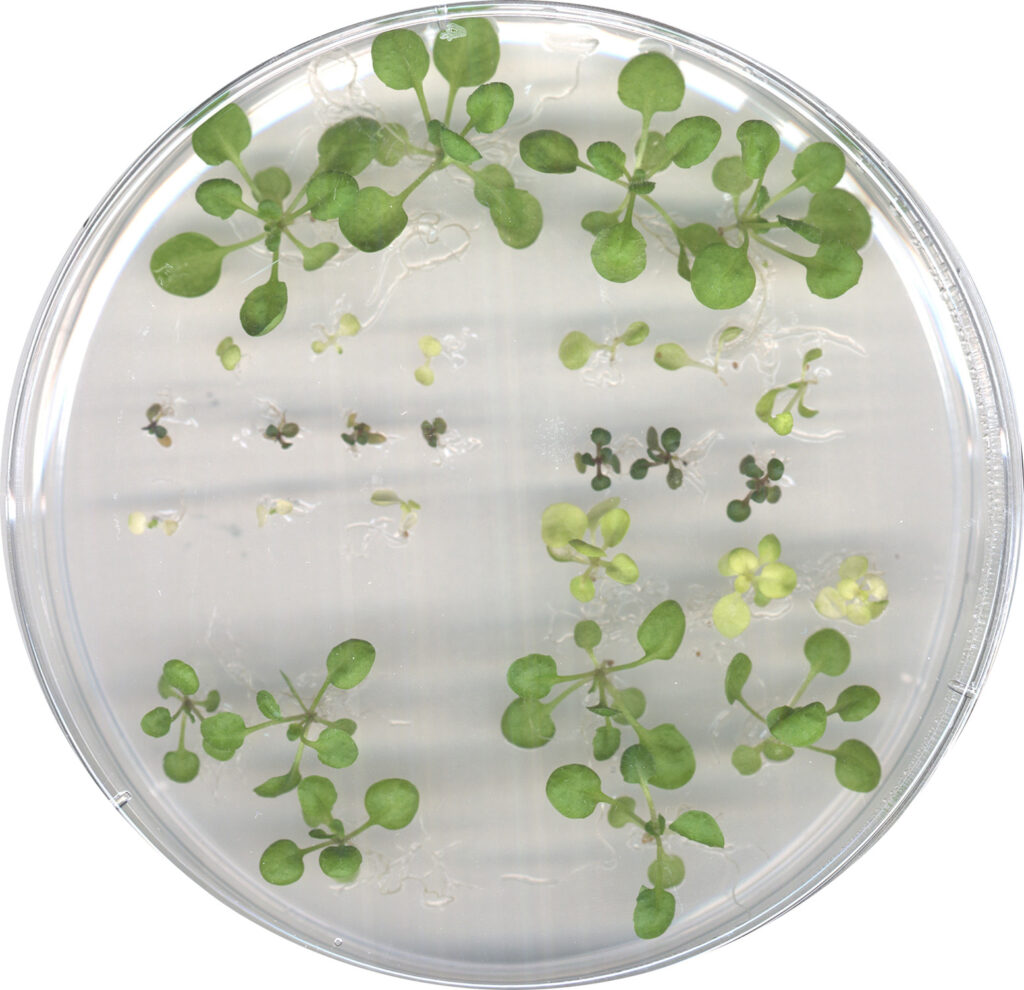
Photograph by Melissa Pischke LeBlanc
Ongoing research in bioremediation (the use of living organisms to clean up the environment) at the University of Georgia (UGA) uses genetic engineering to produce plants that can detoxify contaminated soils. Removing toxins from soil using genetically engineered plants can better restore the integrity of a contaminated ecosystem and cause less disruption to its inhabitants than the traditional remediation methods of excavation and reburial.
Researchers Richard Meagher, from UGA’s Department of Genetics, and Scott Merkle, from UGA’s Warnell School of Forestry, used genetic engineering to produce an Eastern cottonwood tree (Populus deltoides) capable of cleaning up contaminated soil through a process known as phytoremediation. In a study published in 2007, Meagher and Scott describe their engineering of cottonwoods to extract toxic mercury from the soil, transfer it to above-ground tissues, and convert it to vapor. The trees then release the vapor into the atmosphere, where it is diluted to harmless levels.
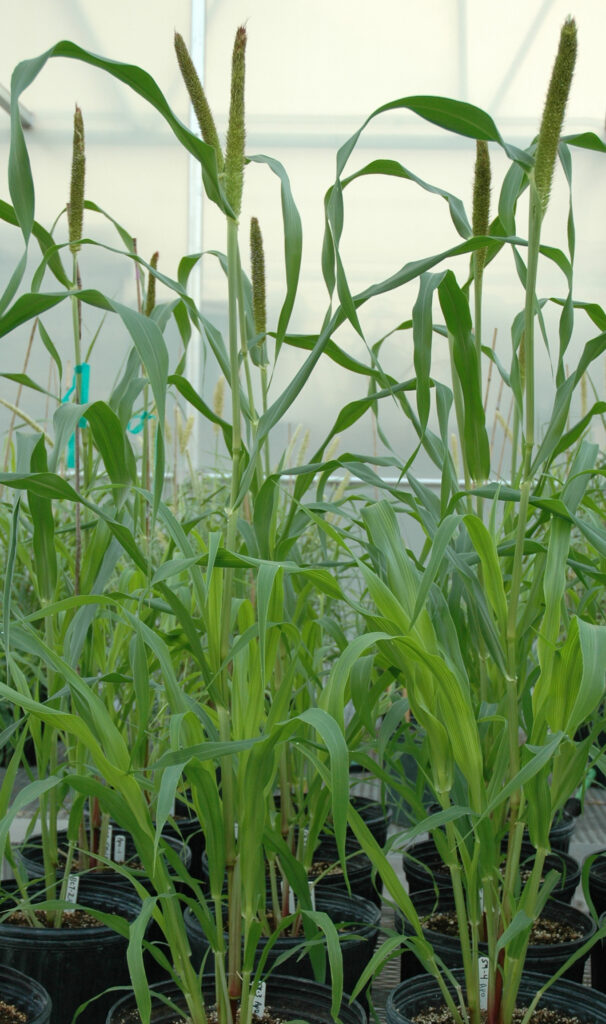
Courtesy of Peggy Ozais-Akins
Peggy Ozais-Akins, a professor of horticulture at UGA’s Coastal Plain Experiment Station, published a study in 2003 detailing her work to engineer pearl millet (Pennisetum glaucum), a drought-resistant cereal used for grazing in the Southeast, including Georgia. Pearl millet cultivars (or varieties) have been improved over the years by traditional breeding, but because of the lengthy time involved with breeding, some feared that improvements would not keep pace with the demand for high-yielding, pest-resistant cultivars. Ozais-Akins successfully developed a system to make a transgenic pearl millet cell that can be quickly improved using genetic-engineering techniques and then coaxed to grow into a full, fertile plant.
Opponents to Genetic Engineering
Genetic engineering is not without controversy. Opponents to the technology worry that the genes from transgenic crops might be accidentally transferred to a native plant. For example, many crop plants are engineered to be resistant to the herbicide glyphosate (the active ingredient in Roundup, the most widely use weed killer on the market). Fields planted with engineered plants can be sprayed with Roundup, which kills the weeds but does not affect the herbicide-resistant crops. If, however, genes that encourage herbicide resistance move into a native weedy plant, farmers have little defense, other than manual removal, against such a “superweed.” One such superweed, Palmer amaranth (Amaranthus palmeri), has been identified in Georgia cotton crops in Dooly, Macon, and Taylor counties.
Additionally, crops that are engineered are not currently labeled as such in the marketplace. Consumers may be unknowingly purchasing foods made with engineered products, and many worry that these transgenic crops contain proteins that could trigger an allergic response in some people.
In 2009 Georgia was one of nine states to introduce legislation that would prevent localities from restricting the sale of genetically engineered seed. As a result, fields without genetically modified organisms (popularly known as GMOs) are at risk of cross-pollination from transgenic crops on an adjacent farm. Opponents to genetic engineering point out that this policy forces farmers who prefer to save seed from their own crops to purchase new seed each season, in order to ensure that their crops do not contain a modified genome.









